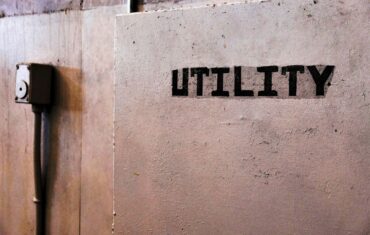A land survey is frequently perceived as an additional expense, leading many prospective homebuyers to contemplate bypassing this crucial step in real estate due diligence. While some real estate investors or homebuyers might be willing to roll the dice, we want to make sure homebuyers and investors understand the different types of land surveys available and how each impacts their investment.
In this blog, we discuss how not all land surveys are created equal. To empower homebuyers and investors, we explore the various types of land surveys, their distinct roles, and impact to help you or your clients make an informed decision.
Common Land Survey Terms
Before we get into the specifics, there are some common terms you’ll hear related to a survey. It’s good to have a clear understanding of what these terms mean in order to determine what survey will suit a homebuyer’s needs.
- Parcel – a lot of land or real property.
- Legal description – unique descriptor of real property found on a deed and land survey.
- Improvement – any permanent developments of land or structures that add value to real property.
- Easement – a nonpossessory right to use and/or enter onto the real property of another without possessing it. An example would be utility easements that municipal workers must be able to access.
- Setback – the minimum distance in which a building or other structure must be set back from a street or road, a body of water, a flood plain, or any other place which is deemed to need protection.
- Encroachment – a violation of another’s property rights by building on or extending a structure into a neighboring parcel.
Why should I get a new survey when I buy a home?
A land survey is important for a homebuyer because it will ultimately tell you what is and isn’t yours. Relying on man-made demarcations like fences or natural barriers like rivers, hedges, or tree lines aren’t reliable. The current or a former owner may have built on land that isn’t a part of the legal description, giving buyers a false impression of what is for sale.
Here are some things that a survey will tell you:
- If the legal description is accurate and “closes.”
- Where the property lines are located.
- If and where there are easements, public right of ways, encroachments, etc.
- If there are any undocumented or unrecorded easement or undocumented encroachments. For instance, a surveyor will note if there is a worn footpath that the public frequently uses or if a neighbor’s fence partially extends into the property.
You may also hear references to different types of certificates. These won’t provide you with the same level of detail a survey will but are still useful or may be required in addition to a land survey.
What Kinds of Land Surveys Exist?
There are different types of land surveys and certificates involved in a real estate deal. They include:
- Boundary/Mortgage Survey
- Standard Lot & Block Survey
- Improvement Location Certificate (ILC)
- Elevation Certificate
- ALTA survey
It’s important to understand the difference between these surveys and certificates, so you choose the right one for the property you are buying.
Add a land survey contingency to your contract
In addition to knowing what’s covered in your survey, you’ll want to be sure to add a land survey contingency to your contract. A land survey is one of the standard items you’ll see listed in the closing costs of the purchase contract. You can negotiate who pays for any of these items, but typically, it will be the buyer who purchases the land survey. A survey contingency will force the seller to address any problems a survey reveals before closing or give the buyer an opportunity to back out of the deal without any ramifications like forfeiting the earnest money deposit.
Boundary or Mortgage Surveys
A boundary survey is named as such because it determines property lines and defines the true property corners of a parcel of land and in addition to including improvements, may also include easements, setbacks, and encroachments.
A boundary survey is often referred to as a mortgage survey, and the exact terminology can vary from one region of the United States to another. Usually, whichever term is used, this is a survey that delineates the lot lines, improvements, and measurements between them.
Standard Lot & Block Survey
This a type of boundary survey that is defined by a residential platted property with a lot/block legal description, where the lot size is under 10,000 sq. ft. and with one improvement under 3,000 square feet.
Most planned suburban neighborhoods are divided into a lot and block system, which is a common method used in the United States and Canada. It’s sometimes called a recorded plat survey system or recorded map survey system. The legal description will indicate if a property is located within a standard lot and block system.
An example of a legal description based on a lot and block would read something like this: Lot 225, Reflection Lakes at Naples-Phase 2C, a subdivision according to the plat thereof as recorded in Plat Book 46, Page 83, of the Public Records of Collier County, Florida.
Improvement Location Certificate
An Improvement Location Certificate (ILC) is often requested by a lender or required by a title insurance underwriter to confirm the validity of the current survey. ILCs are certified by a licensed survey, but they are not surveys.
The most important difference between an ILC and a boundary survey is that the measurements of an ILC are estimates. Essentially, ILCs are less detailed and less expensive.
Survey vs. Improvement Location Certificate
In some cases, a boundary survey might not be required by a lender. At the very least, if you are being financed for your home purchase, you will need to obtain an Improvement Location Certificate to satisfy lender requirements.
If it’s a cash deal, getting a survey or ILC isn’t required, but definitely encouraged to protect your property rights. If you’re working with a title company or real estate attorney, you’ll want to review the title commitment to determine if boundary issues will be covered under your policy. While most lenders will require a title search before financing a deal, survey requirements aren’t as common.
If there are any red flags in the ILC, the lender may request a boundary survey to alleviate any concerns over encroachments. Otherwise, an ILC is an economical alternative to a new full survey. If a survey was done within the past five years, and there is no evidence of improvements, this may be the right choice for you.
To help you determine if you should get an Improvement Location Certificate instead of a Boundary survey, check:
- The age of the current survey. If the last survey was done several years ago, it’s a good idea to get an updated one.
- The permit history of the real property. A seller should disclose if any work has been done and provide a lien waiver to avoid any mechanic’s liens, but obtaining a full permit history will help you determine if any unpermitted or undisclosed work may have taken place.
- The title commitment/policy to see if there is a survey exception. A survey exception can have a huge impact on the legitimacy of a title claim should a boundary issue need resolution in the future.
Additionally, if you are planning to make any improvements to the land, a survey is imperative. This will give you a clear idea of where you can and can’t build. A boundary survey will give you specific measurements required to build without encroaching on your neighbor’s land or on an easement. An ILC will be inadequate for any future building plans.
Elevation Certificates
FEMA (Federal Emergency Management Agency) publishes a standardized form called an elevation certificate. This isn’t a survey but is typically performed by professional surveys, but it can also be done by an engineer or architect. It’s used to determine the premium rate and the appropriate flood insurance plan for properties located in a high-risk flood zone (A, AE, V, VE, etc.)
In order to determine what flood zone a property is in, go to the county property appraiser site and look for the flood zone information. Anything listed as A, AE, V, or VE zone is considered a high-risk flood zone. If you’re buying a condo, check with the association to see if they have an elevation certificate or carry flood insurance on your behalf.
Sometimes, an old certificate may be used to purchase flood insurance if there haven’t been substantial changes to the home’s foundation or footprint.
Given the rise in natural disasters and outdated information in government-designated flood zones, all homeowners should consider adding flood coverage to their home insurance plans. After Hurrican Harvey, only one in four homes had flood insurance in a town that saw severe flooding during the storm.
So, even if the property you are buying isn’t in a high-risk flood zone, an elevation certificate will help you better understand the true flood risk of a property and will usually help to lower the cost of flood insurance premiums.
ALTA Surveys
An ALTA Land Title Survey is a type of boundary survey that adheres to the rigorous national standards set by the American Land Title Association and the National Society of Professional Surveyors. This survey is specially designed for the commercial development of real property.
A boundary survey is significantly less than an ALTA survey, but an ALTA survey will provide more comprehensive and detailed information. In addition to information about property boundaries and easements, an ALTA survey will reveal other features on the property that may affect ownership and use rights, like zoning classification, flood zone classification, and means of access to the property.
This type of survey is recommended for vacant parcels and fully developed commercial developments like apartment or business complexes. While a simple boundary survey will satisfy the minimum requirements for most lenders and title insurance underwriters, you may want to consider an ALTA survey for residential and commercial vacant land. Often, undeveloped land has either never been surveyed or surveyed long ago when technology resulted in far less accurate measurements.
Lenders who are financing a commercial real estate deal are advised to require an ALTA survey to protect their security interests and investments are protected from claims that may not be disclosed by a title search.
Five things to examine in an ALTA survey
Lenders and real estate investors will want to address five concerns during the review of an ALTA survey including:
- Confirming the legal description with the surveyor. When ordering the survey, request that the surveyor also draft a legal description for the property to compare to the one on the title commitment.
- Study the easements and rights of way to determine if they encumber or benefit the property. The location and type of easements or rights of way may interfere with the investor’s intended use of the property. Compare the easements listed in the survey with the ones listed as exceptions in the title commitment as these should match.
- The ALTA survey will show the setback requirements pursuant to the local zoning ordinance. Determine if there are any setback violations and the difficulty and costs to cure the violation. A variance from the local government may be easy to achieve, but removing a building or improvement that’s the cause of the violation may be too expensive and difficult.
- Determine if there are any encroachments and how to cure the issue or if it would be too expensive or difficult to cure. Similar to setback violations, curing an encroachment may not be worth the time or money.
- Find the point of access. Sometimes, a property might have an inconvenient or no point of access. If the property is landlocked, the owner or buyer may be required by the lender to obtain and record an easement for ingress and egress before closing.
If you’re still unsure of what survey is best suited for your purchase, be sure to reach out to a trusted and experienced real estate professional. You can ask the title agent or real estate attorney involved in your closing what will be required to remove a survey exception. After you’ve determined which survey is best, homebuyers, Realtors, and settlement agents can reach out to us directly to get a free competitive quote from a surveyor in your area.










